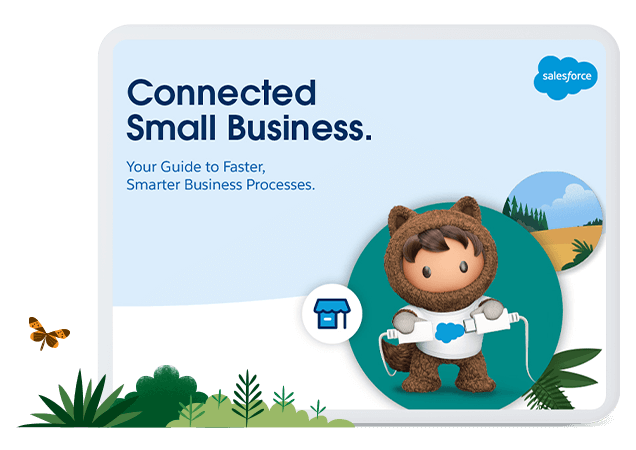The traditional ways of managing business processes are changing. Increasingly organisations are connecting teams, streamlining tasks, looking at ways to drive productivity, and reimagining how they work. Small business trends show that modern technology empowers small businesses to be digital disrupters and people disrupters. In other words, the old SME playbook has been thrown out the window.
Today’s small business is employee-centric, data-driven, highly connected and ready to pivot at a moment’s notice – and it’s all starting with better business process management.
What is business process management?
Business process management (BPM) refers to the way companies organise their core business processes. Effectively, it’s how they execute the everyday tasks that drive their business. Good business process management will enable SMEs to get the most out of their workforce, data and technologies.
On the other hand, poor business process management can lead to low productivity, uninformed decision making, and subpar employee and customer experiences.
How SMEs manage their regular processes can be the difference in whether they succeed in an increasingly competitive landscape or fall behind their competitors.
Why business process management matters
SMEs must optimise their business process management to reach their full potential. Without a defined blueprint for accomplishing ongoing tasks, SMEs will have difficulty identifying where and how processes can be improved and will most likely be wasting precious time and resources at multiple points along the value chain.
Additionally, poor business process management can lead to a poor employee experience (EX). This often results in frustrated workers and high employee churn rates. Considering the financial impact of lost productivity, recruiting new talent, customer dissatisfaction and making business-critical decisions not supported by data, poor process management can be very costly for SMEs.
How small business process management is changing
The Small and Medium Business Trends report reveals that today’s SMEs are turbocharging their processes with new tech, the implementation of which has increased in the wake of the pandemic. The use of customer service software (+3%), email marketing software (+1%), collaboration tools (+2%), marketing automation (+4%) and eCommerce software (+3%) have all risen since August of 2020.
The pandemic not only accelerated digitisation for SMEs but also for their customers. Today’s digital-first customer expects seamless, connected processes, and small businesses are evolving to keep up.
The new framework for efficient business process management focuses on –
Connecting processes and functions.
Offering real-time visibility of data to the entire organisation.
Enabling collaboration between stakeholders.
With these tools and strategies, SMEs will have a solid foundation for creating and managing their ongoing processes. Still, they also might want to consider business process management software.
The benefits of business process management software
Business process management software can help businesses organise and perfect their processes. Good business process management software will enable businesses to create and deploy new strategies, no matter how simple or complex they may be. But business process management software isn’t just a tool for planning; it also offers analytical capabilities to help SMEs evaluate and tweak their processes once they’re up and running.
Today’s business process management software is much more powerful than it was just five years ago. Some business process management software enables teams to automate complex business processes with apps.
Seven tips for effective business process management
Implementing new methods for managing traditional business processes – while also getting the workforce onboard – may sound daunting, but it doesn’t need to be. Here are seven tips for creating an effective BPM strategy.
1. Analyse current business process management and see how it can be re-designed. Map out your processes visually and create a flowchart to help you see the complete picture.
2. Keep your BPM clean and lean by eliminating outdated steps or processes. Once your flowchart has been created, look for redundancies. Where can your workflows be streamlined?
3. Look at where automation can be introduced to lessen the burden on the workforce and reduce human error. AI tools can be used to automate mundane tasks, surface sales leads and provide service teams with a clearer picture of the customer.
4. Perform a SWOT analysis to identify BPM bottlenecks and areas for improvement. Each department or function is likely to have specific pain points, so a company-wide meeting will help you gather critical feedback from those on the front lines.
5. Run a skills gap analysis across functions and see if you can create more effective processes and workflows by upskilling team members. On-demand training platforms have made it easier than ever to skill-up workers to perform across functions.
6. Use all of the information you’ve gathered to map out, create and deploy new processes. Make sure that your BPM has been streamlined, the workforce has been empowered with productivity-boosting tech and the right skills, and that your BPM is centred around your business objectives. Then deploy your new BPM strategy and prepare to track the results.
7. Leverage analytics to measure the efficiency and effectiveness of your new business processes, then evaluate the results and tweak your BPM as needed. In addition to looking at KPIs (Key Performance Indicators), gather feedback from the workforce and see how they’re handling the new workflows.
Better business process management means a brighter future for SMEs
Business process management is an opportunity to create the perfect blueprint for your SME’s unique needs. It’s a chance to give a voice to the workforce and optimise your SME’s resources; to design processes around your customer and workforce rather than around the capabilities of outdated legacy systems; and to grow stronger, smarter, faster and better connected. In other words, it’s a chance to get your SME running at its peak potential.
To see how connecting business processes can help SMEs grow stronger, faster and wiser, check out our eBook, The Connected Small Business. And for more information about how you can help your SME drive productivity and do more with less, download our eBook with productivity tips.







